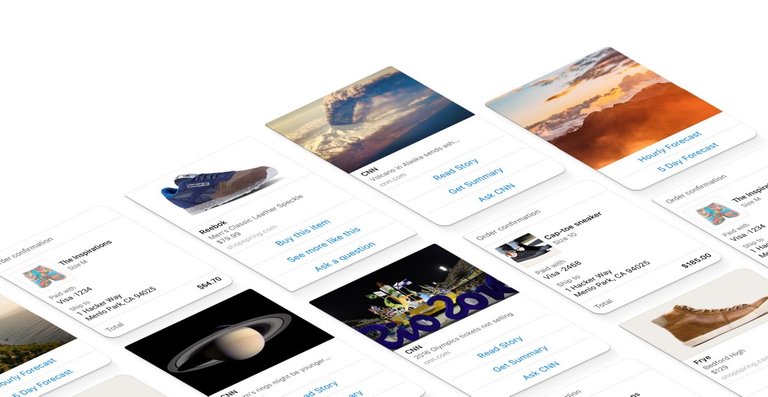
CHATBOTS. (def.). A chatbot is an automated messaging service, powered by rules or artificial intelligence (AI), that a user can interact with via a chat interface.
SERVICES
They handle requests that would normally require a phone call, web search, or mobile app. Thus, their services range from functional (weather, banking, dinner reservations, IoT monitoring and control, scheduling, advertising, etc.) to fun (movies, quizzes, gaming, etc.).
PLATFORM
A chatbot could live in any major chat product (Facebook Messenger, Kik, Slack, Telegram, Text Messages, etc.) or as a stand-alone interface.
TYPES
- Chatbot that functions based on rules:
- This bot is limited. It can respond to very specific commands. If you say an unknown command thing, it would not know know what you mean.
- This bot is as smart as it is programmed to be.
- Chatbot that functions using machine learning:
- This bot has an artificial brain AKA artificial intelligence. You don’t have to be specific when you are talking to the bot. It understands natural language, not just programmed commands.
- This bot continuously gets smarter as it learns from conversations it has with people.
RULES
- Bots should have a name, purpose and a persona.
- Bots should have a domain and must explicitly state it at the start and every time it fails.
- Bots must build trust with customers by delighting the user with clever conversations.
- Bots should learn from its mistakes. Based on customer interactions, the bot should learn every non-programmed command when it crashes by re-programming itself.
- Bots must provide Business Intelligence by performing Sentiment Analysis on customer interactions.
CONVERSATIONAL INTERFACES
Conversational interfaces largely pertains to utilizing chat, messaging, or other natural language interfaces (i.e. voice) to interact with people, brands, or services. The net result is that people will be talking to brands and companies over Facebook Messenger, WhatsApp, Telegram, Slack, and elsewhere else and will find it normal.
The verbs we use with traditional apps are irrelevant in the conversational paradigm. We “buy”, “download”, “install”, and “trash” apps. The conversational paradigm is more social, and less technologic. We use humane verbs such as “add”, “invite”, “contact”, “mute”, “block”, and “message”. The language of conversation becomes more accessible to a broader audience, which will accelerate the adoption of conversational agents faster than desktop apps.
No longer will you need to convince users to “download and install” an app — they can just invite a bot to a conversation and interact with it like they would a person. Zero barriers to adoption, with minimal risk to the user (i.e. malware, etc).
Although everyone has a screen in their pocket, it doesn’t mean that they should be forced to look at it to interact with a service. The screen has become a middleman to the conversation with an organization or an experience. Conversational interfaces are about delivering convenience, personalization, and decision support while people are on the go, with only partial attention to spare.
MARKET ANALYSIS
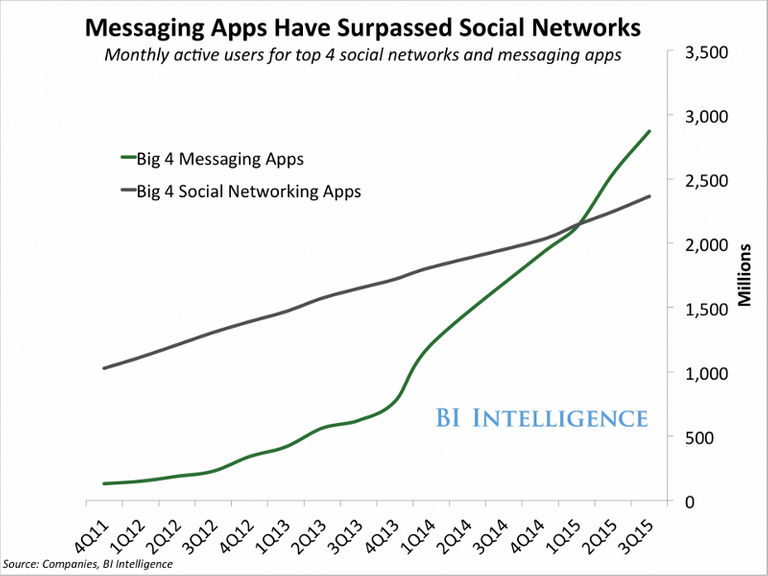
Data from Business Insider shows that messaging apps have eclipsed social networks in monthly activities. People are using messenger apps more than they are using social networks. If one wants to build a business online, one must build it where the people are interacting the most. That place is now inside messenger apps.
As the number of mobile apps increases while the size of our mobile screens decreases, we’re reaching the limits of the mobile “OS + apps” paradigm. It’s getting harder to download, setup, manage and switch between multiple apps on our mobile device and most mobile users only use a handful of apps every day. As an alternative, messaging apps are becoming the new platform, subsuming the role played by the mobile operating system. This is similar to the trend in the mid ‘90s, when the browser replaced the desktop OS as the new platform. Just as websites replaced client applications then, messaging bots will replace mobile apps now. Bots, are the new apps, and the bot store is the new app store.
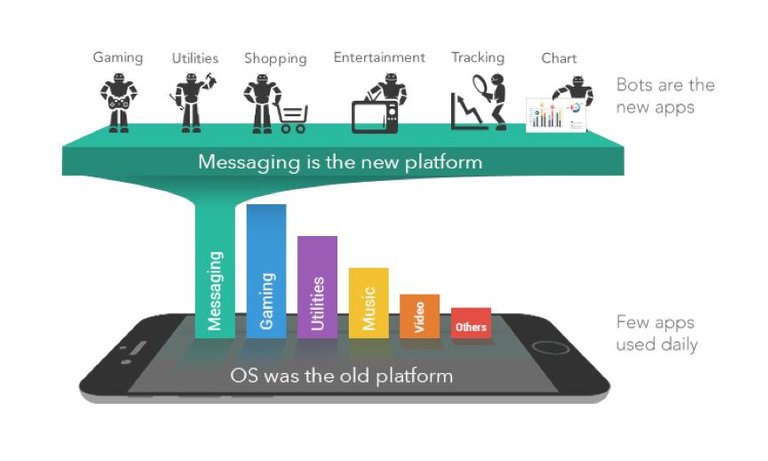
Facebook’s announcement of the “Messenger Bot Store” at F8, is arguably the most consequential event for the tech industry since Apple announced the App Store and iPhone SDK in March 2008. By the time the App Store opened for business in July 2008, approximately 6 million people worldwide owned an iPhone. By the end of the year, the number of iPhone owners had more than doubled, and in each of the following years iPhone sales doubled and then doubled again. The App Store ecosystem – which now has more than 1.5 million iOS apps – heralded the arrival of a new “mobile” era. Today, Facebook Messenger has 800 million monthly active users – more than 100 times the number of iPhone owners when Apple launched the App Store. Messenger’s current active user base exceeds even the total number of iPhones ever sold.
OPPORTUNITIES
For Users
- Less clutter: Starting a chat or adding a bot to a chat room is all it takes to “install” an app. Save on smartphone storage and home screen clutter.
- Central place: Not having to navigate between apps will reduce both the cognitive load for the user’s brains, and CPU load for their phones. You are able to do more from the familiar messaging environments you have always used.
- Convenience: Messages are asynchronous. You are used to having unread messages that you check later. You understand that replies may not arrive immediately. This platform will allow your phone to handle several threads of conversations and apps in parallel, in a way not possible with current apps.
For Marketers
- Place: Messaging takes the largest share of our smartphone usage time. As a marketer, you need to be present in the environment your users spend their time in.
- Re-engagement will become easier. A notification message can put an old conversation back on top — even if platforms will obviously set up boundaries to protect their users from spam. The conversational apps that provide value to their users with infrequent usage will be less likely to fall into the oblivion current long-tail mobile apps experience.
- Group/social discovery will be an incredible growth tool.
For Developers
- Native: You’re sitting on top of platforms that have many engineers working on iOS, Android and Web clients. Your app works natively across all these environments.
- Easy to port: the different platforms will have different specs, but nothing as drastically different as different programming languages for iOS and Android.
- API: You can code in your favourite backend language.
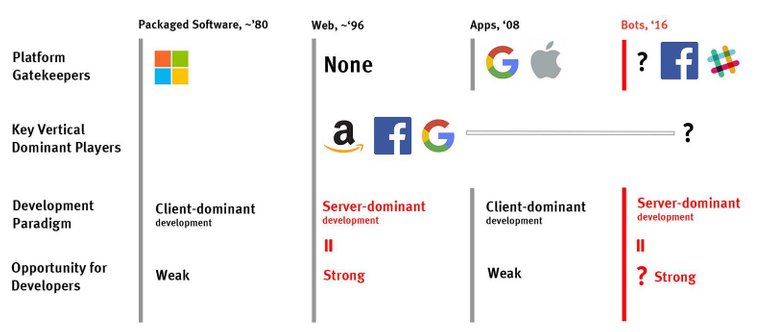
CASE STUDY 1
Airlines (KLM)
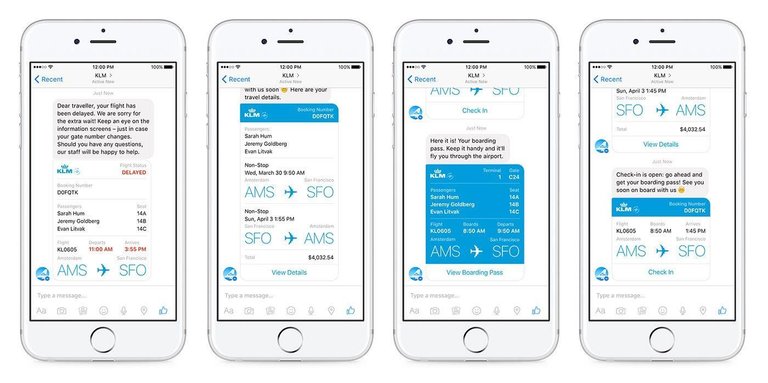
The Messenger team recently announced that its first airline partner, KLM Royal Dutch Airlines launched a chatbot. KLM flyers have to choose to receive info via Messenger when they book tickets through the airline's website to be able to take advantage of its new feature. Once they do, they automatically receive their itinerary, flight updates and check-in notifications. Passengers also get their boarding passes, rebook flights when needed, and communicate with the airline all from one contextual thread. Flyers do not need to remember the combination of a frequent-flyer alphanumerical number and password to obtain a boarding pass, and hold on long calls on the phone to change flights. It also gives the flyer the choice to talk to a human staff member in case they have questions beyond the bot's knowledge.
CASE STUDY 2
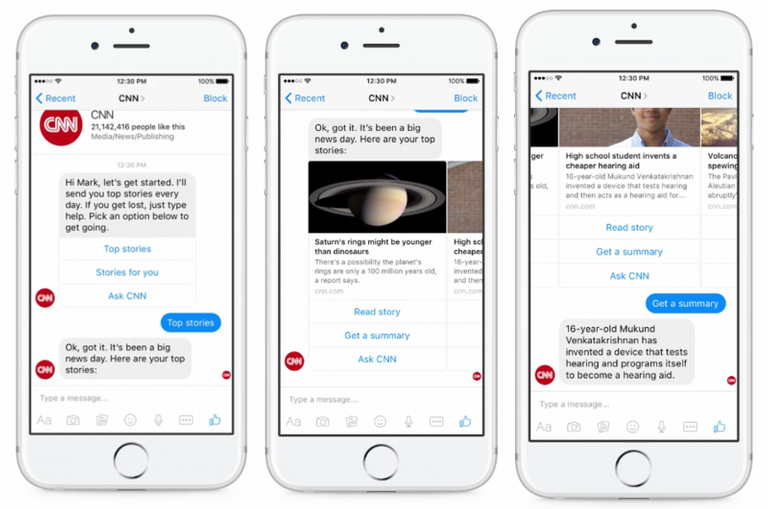
News (CNN)
CNN is using bots for Messenger to interact with users in a natural and conversational way. Subscribers to CNN on Messenger will receive a daily digest of top stories right within the Messenger app. The bot will also recommend personalized content based on a user’s preferences and learned interests. The experience gets more personalized with each interaction on Messenger. Additionally, users can message CNN for news and information about specific topics. For example, if a user is interested in learning more about Zika, they can simply message CNN “Zika.” CNN will respond with the latest news or most relevant story about the virus. The message “delegate count” will evoke a response with a lead and link to CNN’s latest piece about which presidential candidates have racked up the most delegates heading into the national conventions.
Wow such an amazing post! How long did it take you to prepare this?
Thanks you! @turbosnail9
A few hours of research. Check out https://chatbotsmagazine.com/ they have really good content on this emerging technology!
Great job Imran! I love me some chatbotz. :D
Congratulations @imranj131! You have received a personal award!
Click on the badge to view your own Board of Honor on SteemitBoard.
For more information about this award, click here
Congratulations @imranj131! You have received a personal award!
Click on the badge to view your Board of Honor.
Do not miss the last post from @steemitboard:
SteemitBoard World Cup Contest - Play-off for third result
Participate in the SteemitBoard World Cup Contest!
Collect World Cup badges and win free SBD
Support the Gold Sponsors of the contest: @good-karma and @lukestokes
Congratulations @imranj131! You received a personal award!
You can view your badges on your Steem Board and compare to others on the Steem Ranking
Vote for @Steemitboard as a witness to get one more award and increased upvotes!